Related Research Articles
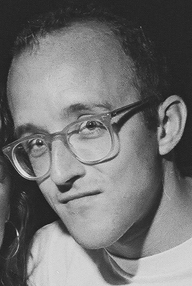
Keith Allen Haring was an American artist whose pop art emerged from the New York City graffiti subculture of the 1980s. His animated imagery has "become a widely recognized visual language". Much of his work includes sexual allusions that turned into social activism by using the images to advocate for safe sex and AIDS awareness. In addition to solo gallery exhibitions, he participated in renowned national and international group shows such as documenta in Kassel, the Whitney Biennial in New York, the São Paulo Biennial, and the Venice Biennale. The Whitney Museum held a retrospective of his art in 1997.

Ross Bleckner is an American artist. He currently lives and works in New York City. His artistic focus is on painting, and he held his first solo exhibition in 1975. Some of his art work reflected on the AIDS epidemic.

David Michael Wojnarowicz was an American painter, photographer, writer, filmmaker, performance artist, songwriter/recording artist, and AIDS activist prominent in the East Village art scene. He incorporated personal narratives influenced by his struggle with AIDS as well as his political activism in his art until his death from the disease in 1992.

Rembrandt Peale was an American artist and museum keeper. A prolific portrait painter, he was especially acclaimed for his likenesses of presidents George Washington and Thomas Jefferson. Peale's style was influenced by French neoclassicism after a stay in Paris in his early thirties.

The National Portrait Gallery (NPG) is a historic art museum in Washington, D.C., United States. Founded in 1962 and opened in 1968, it is part of the Smithsonian Institution. Its collections focus on images of famous Americans. Along with the Smithsonian American Art Museum, the museum is housed in the historic Old Patent Office Building.

Irving Ramsey Wiles was an American artist, born in Utica, New York.
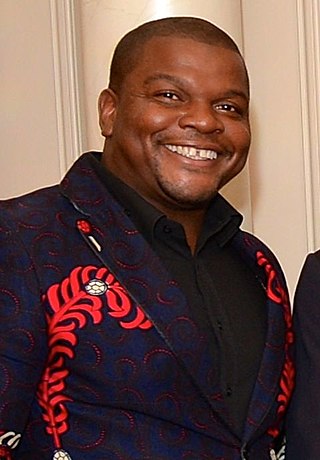
Kehinde Wiley is an American portrait painter based in New York City. He is known for his naturalistic paintings of black people that reference the work of Old Master paintings. In 2017, Wiley was commissioned to paint former President Barack Obama's portrait for the Smithsonian National Portrait Gallery. The Columbus Museum of Art hosted an exhibition of his work in 2007 and describes his paintings as "heroic portraits which address the image and status of young African-American men in contemporary culture."
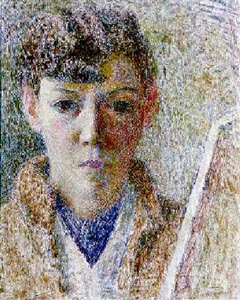
Dod Procter, born Doris Margaret Shaw, (1890–1972) was a famous early twentieth-century English artist, best known for Impressionistic landscapes and delicate "nearly sculptural studies of solitary female subjects." Her sensual portrait, Morning, of a fisherman's daughter in Newlyn, caused a sensation. It was bought for the public by the Daily Mail in 1927.
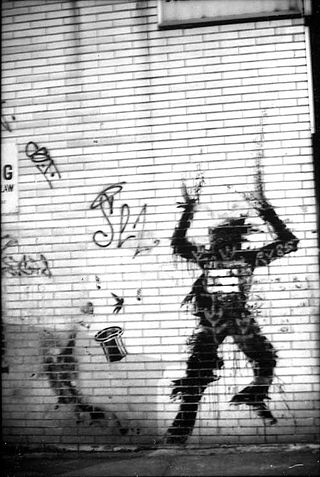
Richard Art Hambleton was a Canadian artist known for his work as a street artist. He was a surviving member of a group that emerged from the New York City art scene during the booming art market of the 1980s which also included Keith Haring and Jean-Michel Basquiat. While often associated with graffiti art, Hambleton considered himself a conceptual artist who made both public art and gallery works.

Steven Alan Kaufman was an American pop artist, fine artist, sculptor, stained glass artist, filmmaker, photographer and humanitarian. His entry into the world of serious pop art began in his teens when he became an assistant to Andy Warhol at The Factory studio, who nicknamed him "SAK". Kaufman eventually executed such pieces as a 144-foot-long canvas which later toured the country.

The Graham Children is an oil painting completed by William Hogarth in 1742. It is a group portrait depicting the four children of Daniel Graham, apothecary to King George II. The youngest child had died by the time the painting was completed.

The AIDS pandemic began in the early 1980s and brought with it a surge of emotions from the public: they were afraid, angry, fearful and defiant. The arrival of AIDS also brought with it a condemnation of the LGBT community. These emotions, along with the view on the LGBT community, paved the way for a new generation of artists. Artists involved in AIDS activist organizations had the ideology that while art could never save lives as science could, it may be able to deliver a message. Art of the AIDS crisis typically sought to make a sociopolitical statement, stress the medical impact of the disease, or express feelings of longing and loss. The ideologies were present in conceptions of art in the 1980s and are still pertinent to reception of art today as well. Elizabeth Taylor, for example, spoke at a benefit for AIDS involving artwork, emphasizing its importance to activism in that "art lives on forever". This comment articulates the ability of artwork from this time to teach and impact contemporary audiences, post-crisis. This page examines the efforts of artists, art collectives, and art movements to make sense of such an urgent pandemic in American society.
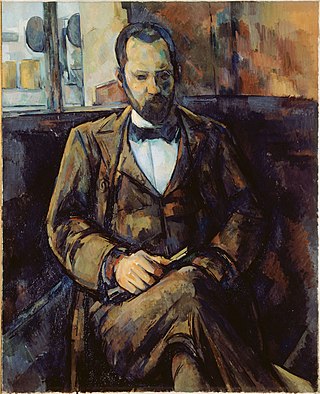
Portrait of Ambroise Vollard is an 1899 oil-on-canvas portrait by Paul Cézanne of his art dealer Ambroise Vollard. It was bequeathed by Vollard on his death to the Petit Palais in Paris, where it is still housed today. Like many of his portraits, the Portrait of Ambroise Vollard displays the significant role of the subject in Cézanne's life, and specifically, the artist's gratitude for promoting his work and establishing his reputation as an artist.

Edmond de Belamy, sometimes referred to as Portrait of Edmond de Belamy, is a generative adversarial network (GAN) portrait painting constructed by Paris-based arts collective Obvious in 2018 from WikiArt's artwork database. Printed on canvas, the work belongs to a series of generative images called La Famille de Belamy. The print is known for being sold for US$432,500 during a Christie's's auction.

A Pile of Crowns for Jean-Michel Basquiat is a 1988 painting created by American artist Keith Haring. The artwork was made to memorialize his friend, artist Jean-Michel Basquiat. It depicts a towering pile of Basquiat's trademark crowns.

Todos Juntos Podemos Parar el SIDA is a mural created by American artist and social activist Keith Haring in 1989. The mural was painted to raise awareness to the AIDS epidemic. It is located next to the Museu d'Art Contemporani de Barcelona museum in the El Raval neighbourhood of Barcelona.

Andy Mouse is a series of silkscreen prints created by American artist Keith Haring in 1986. The character Andy Mouse is a fusion between Disney's Mickey Mouse and Andy Warhol. The series consists of four silkscreen prints on wove paper, released in an edition of 30 per colorway, all signed and dated in pencil by Haring and Warhol.

Breaking the Pose – alternately titled Breaking the Pose (The Art Class) – is an oil painting from 1986 by the painter Jerome Witkin. Completed when the artist was 47 and working as a professor at Syracuse University, the work demonstrates why Witkin has been called one of the greatest contemporary artists of his time and one of today’s great narrative painters.

Unfinished Portrait of Nathaniel Hurd is an oil painting created by John Singleton Copley, likely created in 1765. It measures 29 3/8 inches by 24 5/8 inches. The portrait depicts Bostonian silversmith, Nathaniel Hurd, who lived from 1730 to 1777, and was part of a notable silversmith family.
References
- 1 2 3 4 "HIDE/SEEK: Difference and Desire in American Portraiture". www.brooklynmuseum.org. Retrieved April 13, 2024.
- 1 2 3 4 "Hide/Seek: "Unfinished Painting" by Keith Haring - National Portrait Gallery". Smithsonian Institution (in Spanish). Retrieved April 11, 2024.
- ↑ "Keith Haring: Art Is for Everybody". Walker Art Center . Retrieved June 2, 2024.
- ↑ Kaplan, Steven (1998). "Resurrecting the Apple / Keith Haring, Whitney Museum of American Art, New York. June 25-September 21, 1997. Art Gallery of Ontario, Toronto, October 17,1997 - January 18, 1998". ETC (in French) (41): 55–56. ISSN 0835-7641.
- 1 2 3 Fields, Liz (November 19, 2020). "Facing death from AIDS, Keith Haring kept creating | American Masters | PBS". American Masters. Retrieved April 14, 2024.
- ↑ Smith, Jason A. (June 2019). "Keith Haring, Felix Gonzalez-Torres, Wolfgang Tillmans, and the AIDS Epidemic: The Use of Visual Art in a Health Humanities Course". Journal of Medical Humanities. 40 (2): 181–198. doi:10.1007/s10912-018-9506-4. ISSN 1041-3545. PMID 29476297.
- ↑ "Painting | Genres | Keith Haring". www.haring.com. Retrieved April 14, 2024.
- ↑ Sawyer, Miranda (June 2, 2019). "'The public has a right to art': the radical joy of Keith Haring". The Observer . ISSN 0029-7712. Archived from the original on May 11, 2024. Retrieved April 14, 2024.
- ↑ Widgery, David (1992). "AIDS Farewells". BMJ: British Medical Journal. 305 (6853): 590. doi:10.1136/bmj.305.6853.590. ISSN 0959-8138. JSTOR 29716880. PMC 1883293 . PMID 1393064.
- ↑ Cole, Margherita (January 16, 2024). "AI "Completes" Keith Haring's Intentionally Unfinished Last Artwork, Sparks Controversy". My Modern Met. Retrieved April 11, 2024.
- 1 2 Binswanger, Julia. "A.I. 'Completes' Keith Haring's Intentionally Unfinished Painting". Smithsonian Magazine. Retrieved April 14, 2024.